George Lucas’ otherworldly Los Angeles museum is almost finished. Here’s a sneak peek
Architect Ma Yansong walks us through the design of the $1 billion Lucas Museum of Narrative Art, set to open early next year
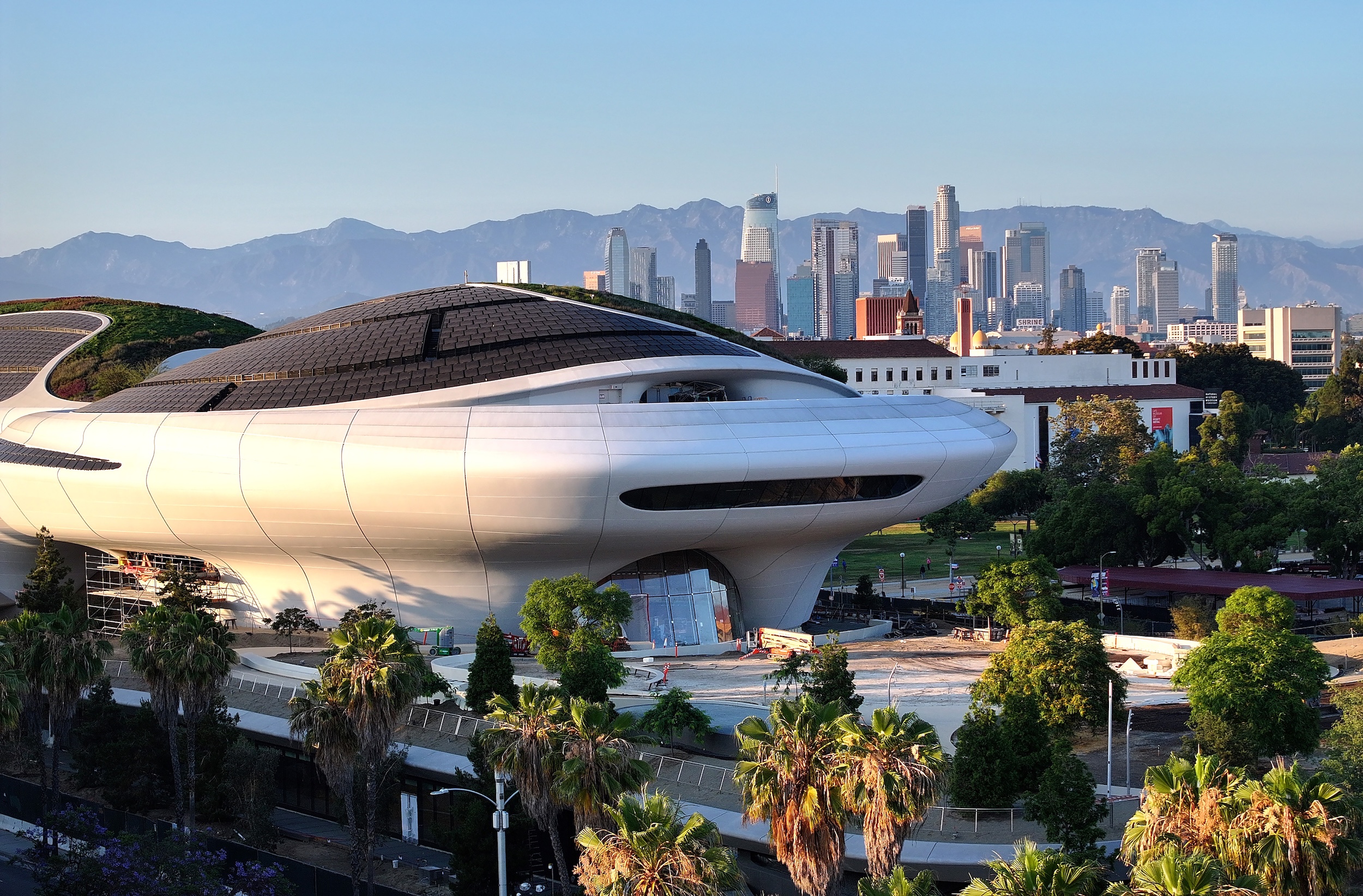
After more than a decade and four proposed sites, the $1 billion Lucas Museum of Narrative Art is finally taking shape in Los Angeles’ Exposition Park. Designed by Ma Yansong of Beijing studio MAD Architects (which has an office in LA), with Stantec as executive architect, the swaggering, futuristic museum – co-founded by filmmaker George Lucas and his wife Mellody Hobson – is nearing the final stages of construction, edging toward a projected 2026 opening on its 11-acre campus.
The five-story, 300,000 sq ft building will house galleries, theatres, classrooms, dining and retail spaces, all in service of the museum’s mission to explore how visual stories reflect and shape society. It will contain much of Lucas’ art collection – illustrations, paintings, photography, and other media centred on visual storytelling – as well as artifacts from the Lucasfilm archives, such as props, costumes, and storyboards from Star Wars and Indiana Jones.
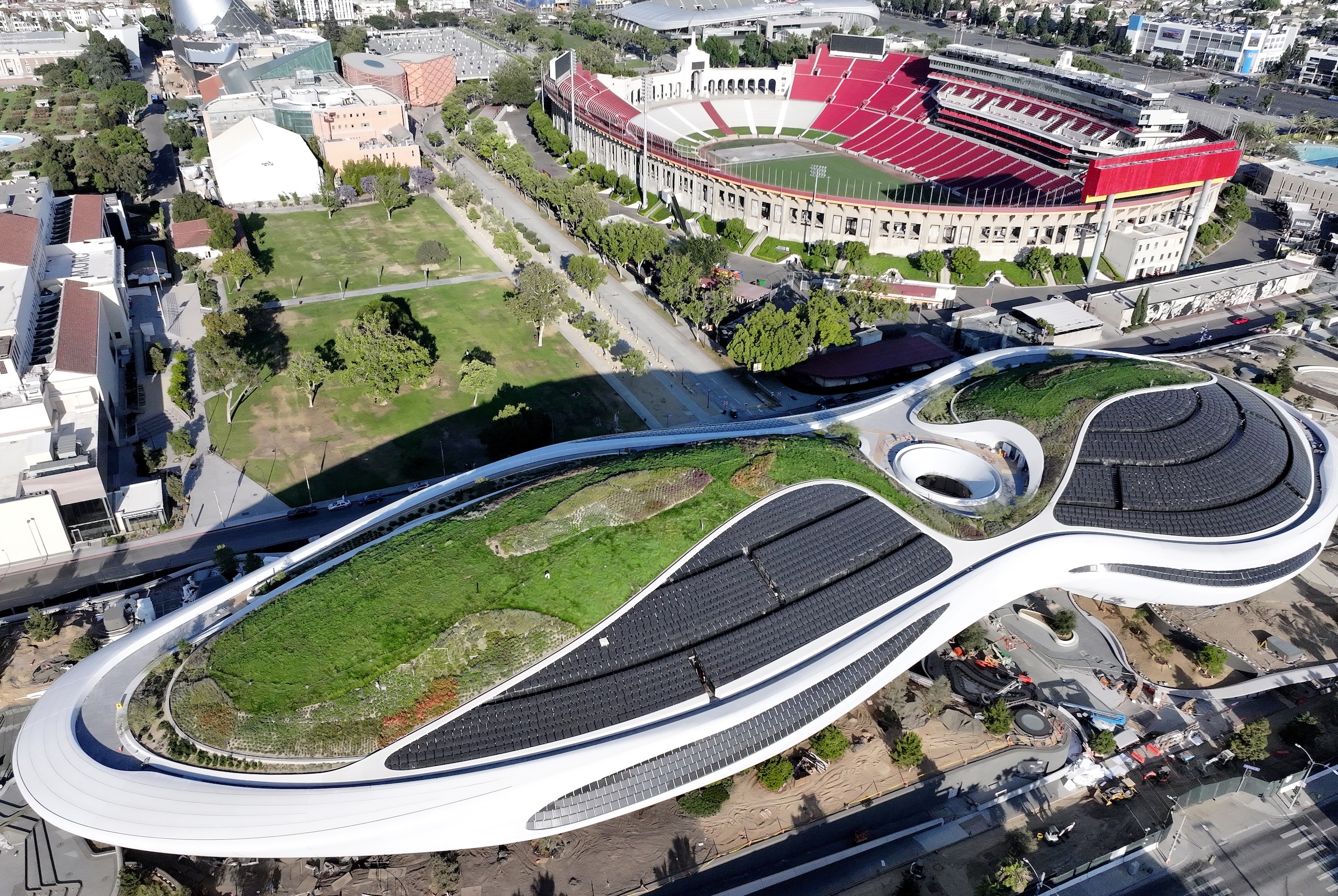
The museum was originally envisioned for a site in San Francisco’s Presidio in 2010, with a design by Dallas-based Urban Design Group, but the proposal was rejected by the Presidio Trust. Lucas then looked to Chicago’s lakefront, where the project faced opposition from preservationists advocating to keep the site open for public use, and MAD’s design, which had been selected through an international competition in 2014, was ultimately shelved. Undeterred, Lucas and Ma developed parallel proposals for San Francisco’s Treasure Island and LA’s Exposition Park, with both cities competing to host the project. In 2016, Los Angeles was selected. Initially slated to open in 2021, the museum has seen delays due to the pandemic and other setbacks.
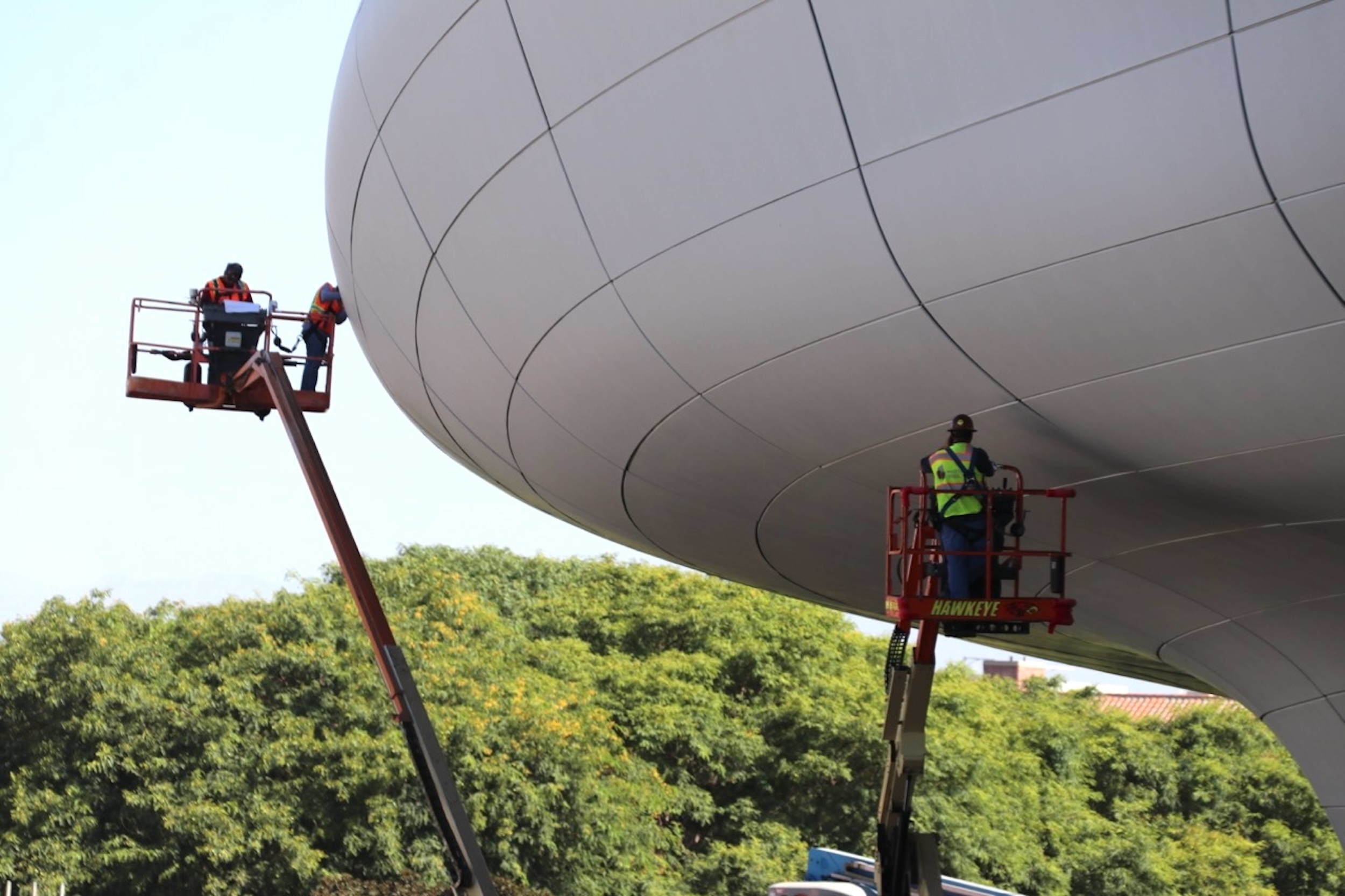
Though his firm created designs for three different sites, certain ideas held firm, says Ma. From the start, the Lucas Museum was conceived as a space to embody the emotional and narrative power of art and storytelling, he notes. 'That core vision remained constant across all three iterations, even as the contexts shifted.'
The final site offered unique opportunities. Surrounded by cultural institutions and embedded in a park landscape, 'we were able to shape a building that is both part of its environment and entirely its own', Ma says. The long design process also gave the team time to refine their thinking around sustainability, materials, and public space. 'It allowed the design to mature – not just in form, but in spirit.'
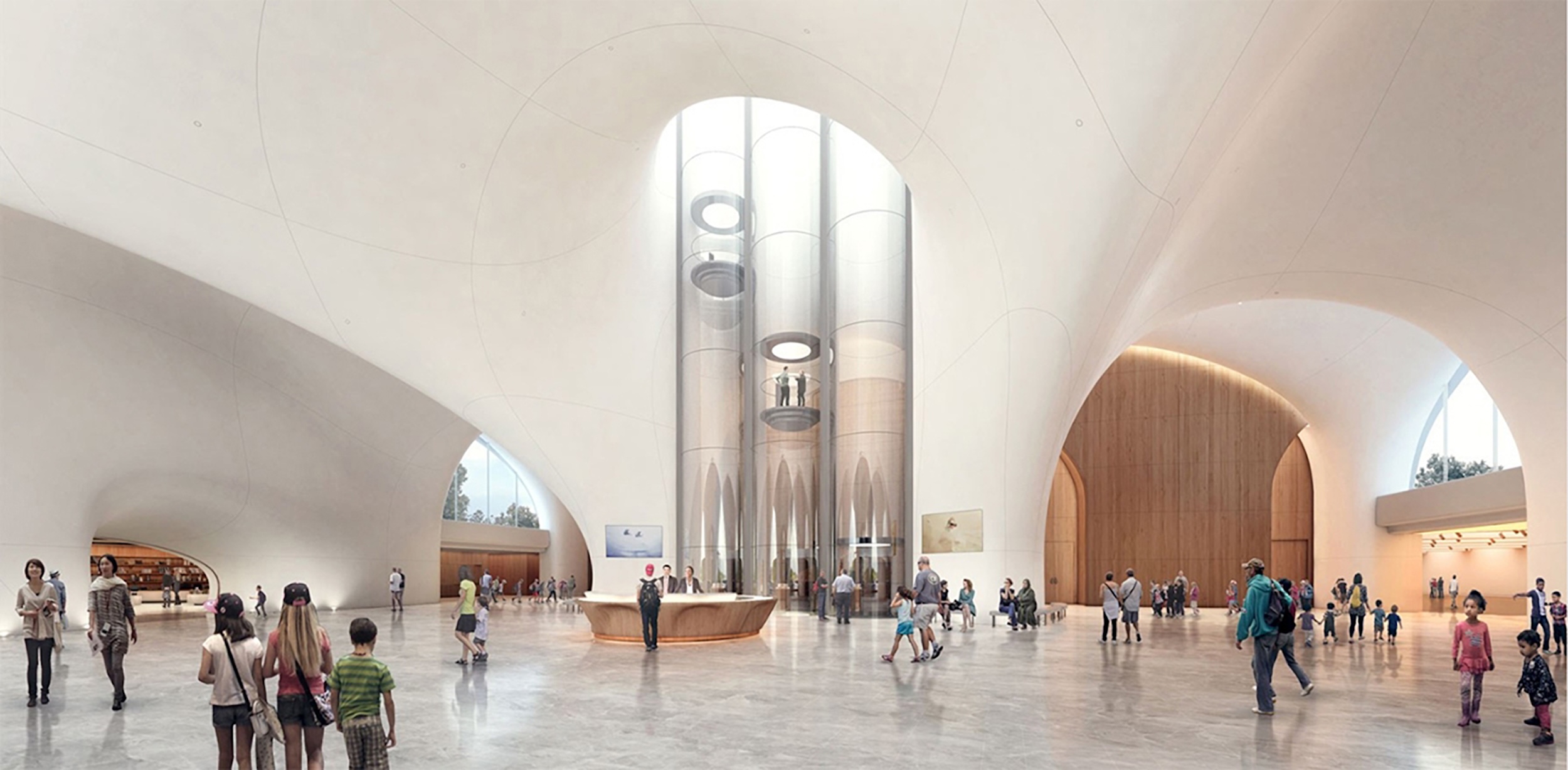
A rendering showing the soaring lobby
It’s hard to avoid the term space-age when describing the museum’s jaw-dropping form. While Ma is known for his attention-grabbing designs, his work is deeply rooted in nature and its relationship to the built environment. 'Nature is not simply an aesthetic reference for me,' he says. 'It’s a way of thinking about space, emotion, and experience.'
The building’s flowing curves and softened edges stand in contrast to the city’s rigid geometries. They’re inspired by natural topographies – mountains, clouds, waves. 'Yet they are not literal imitations,' says Ma. 'They create a spatial experience that feels both grounded and otherworldly.'
Receive our daily digest of inspiration, escapism and design stories from around the world direct to your inbox.
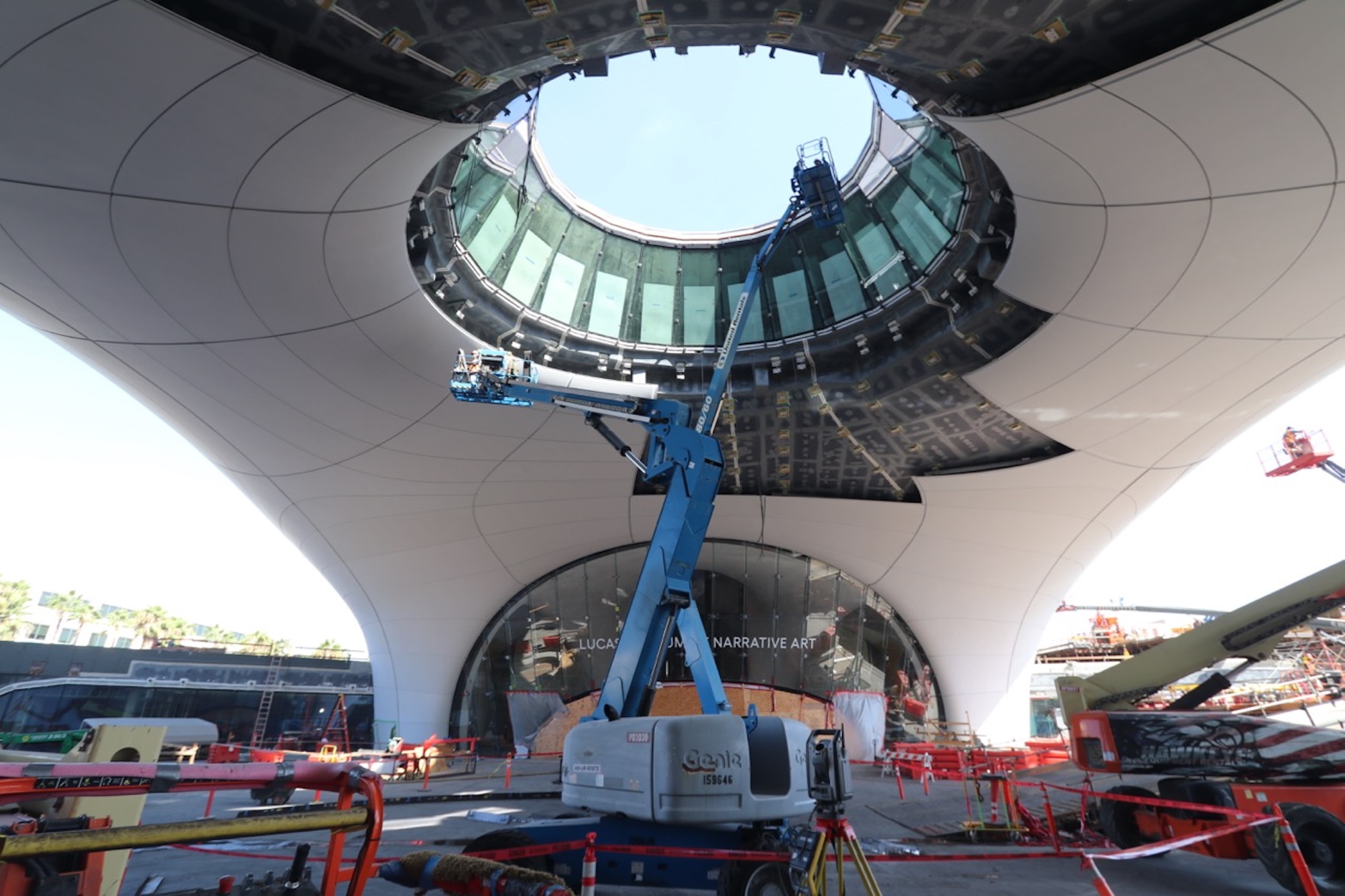
Elevated at the centre to preserve views and form a public gathering space, the building acts as a canopy over a plaza that connects it to the surrounding landscape and streetscape. An elliptical oculus crowns the plaza, marking a gateway to the larger park.
The idea of nature extends to the museum’s sustainability strategies, which include a geothermal system, rainwater harvesting, 24,000 sq ft of rooftop photovoltaics, a super-insulated envelope and seismic isolation engineered to withstand 42 inches of ground movement in any direction. 'The building becomes part of a living system,' says Ma. 'It becomes part of the park, part of the city, and part of the natural world.'
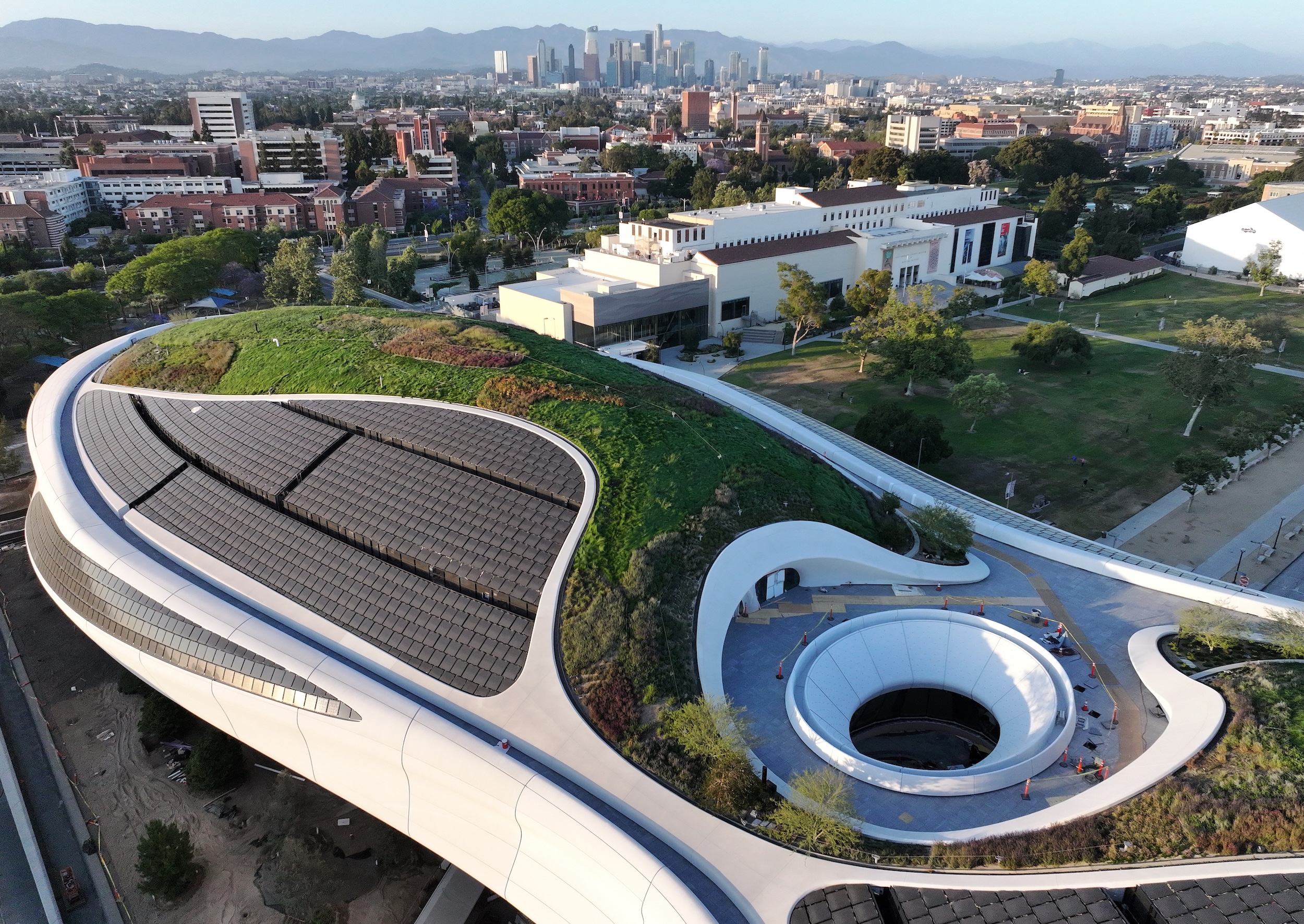
As the vessel for the museum’s collection, the landmark structure is also intended to be part of the storytelling experience. Soaring north and south lobbies draw visitors into 100,000 sq ft of exhibition and public space. Clad in 1,500 uniquely shaped white fibreglass-reinforced polymer (FRP) panels, the Lucas Museum strives to be both iconic and contextually integrated – its landscaped roof helping it blend into the park’s topography.
That nearly 1.5-acre roof is part of a broader vision by Mia Lehrer of Studio-MLA, who is transforming what was once a parking lot into a verdant, immersive environment. The new landscape will feature undulating landforms, 200 trees, hundreds of native and drought-tolerant plantings and a series of experiential elements: a hanging garden, amphitheatre, meadow and a waterfall designed to contribute to the museum’s passive cooling strategy.
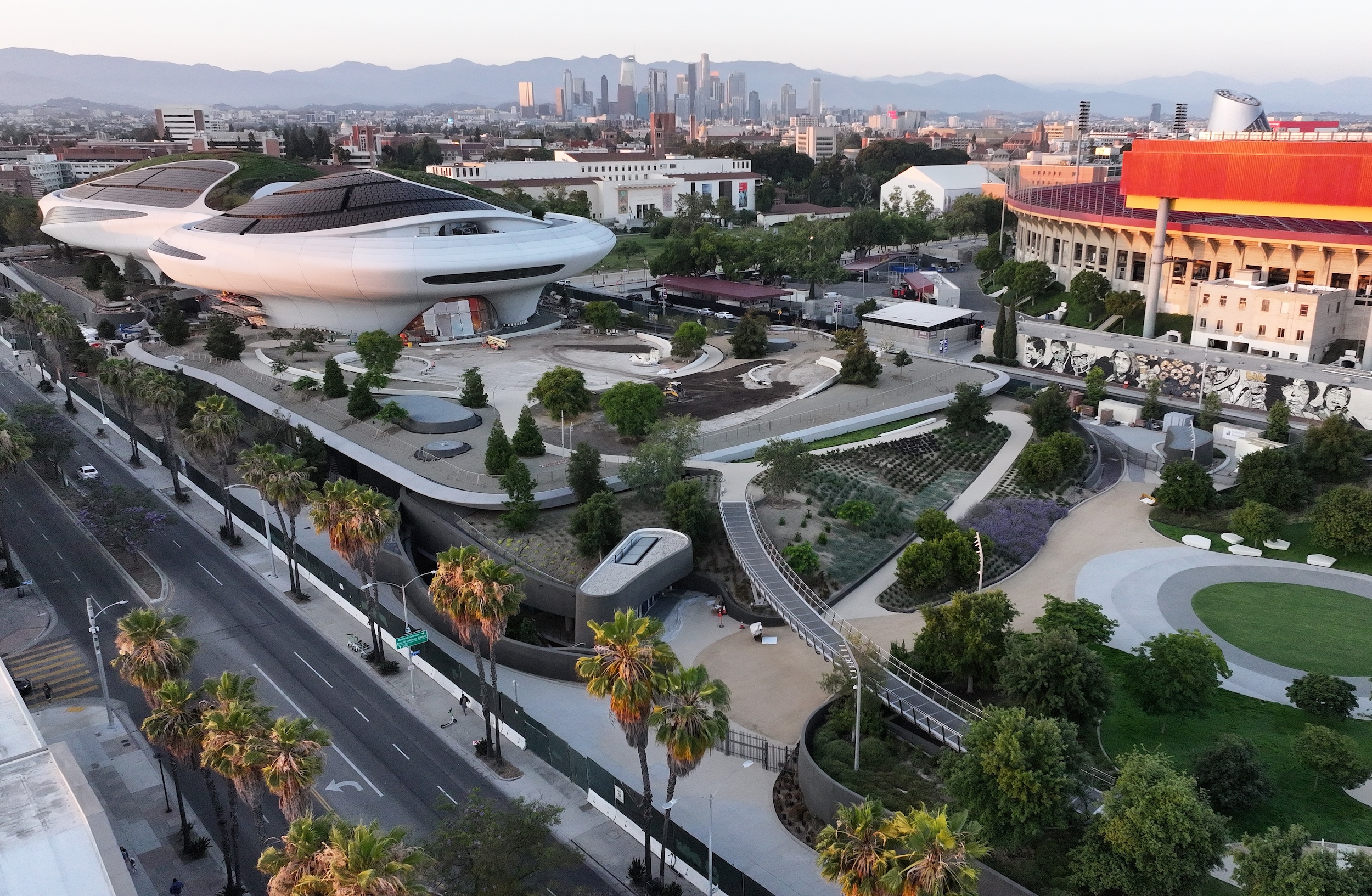
Ma has said he hopes his architecture evokes emotion – not a single feeling, but a range of responses shaped by the experience of space. 'Architecture should move people. It should create a sense of wonder, of possibility, and of being connected to something larger than oneself,' he says.
At the Lucas Museum, whether walking through public spaces or sitting beneath the plaza canopy, 'I want visitors to feel openness, imagination, and peace. The soft, sculptural form invites reflection. The pathways and thresholds encourage movement and discovery.'
Visitors will soon be able to draw their own conclusions, as the museum’s long journey comes to an end and they are able to experience it firsthand.
The former managing editor of Architectural Record and The New York Observer, Beth Broome writes about architecture, design, urbanism, and culture. She is based in Brooklyn, New York.
-
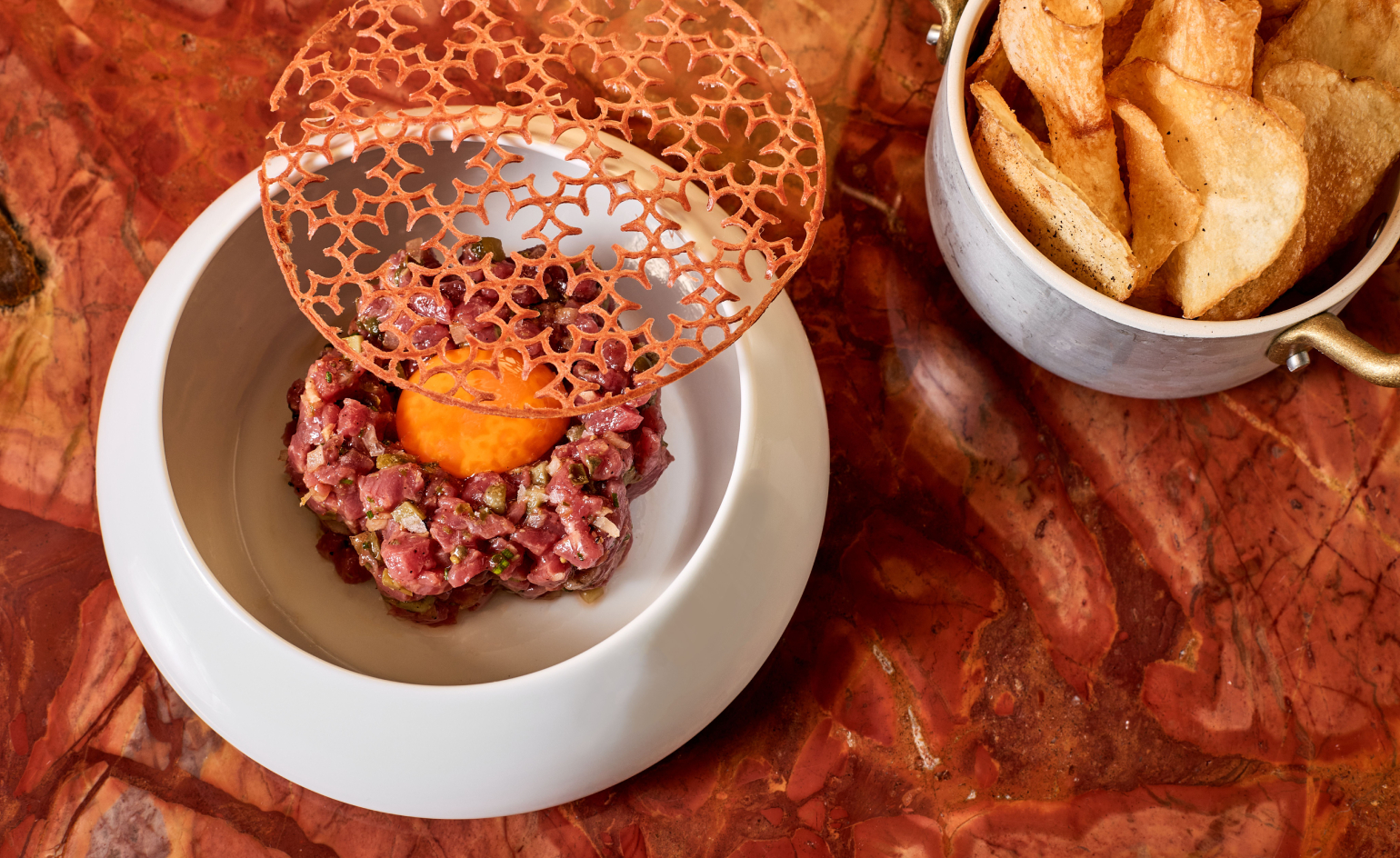 La Monique brings the French Riviera to Santa Monica
La Monique brings the French Riviera to Santa MonicaA transportive room of velvet, candlelight, and Riviera chic, serving French favourites with a modern wink
-
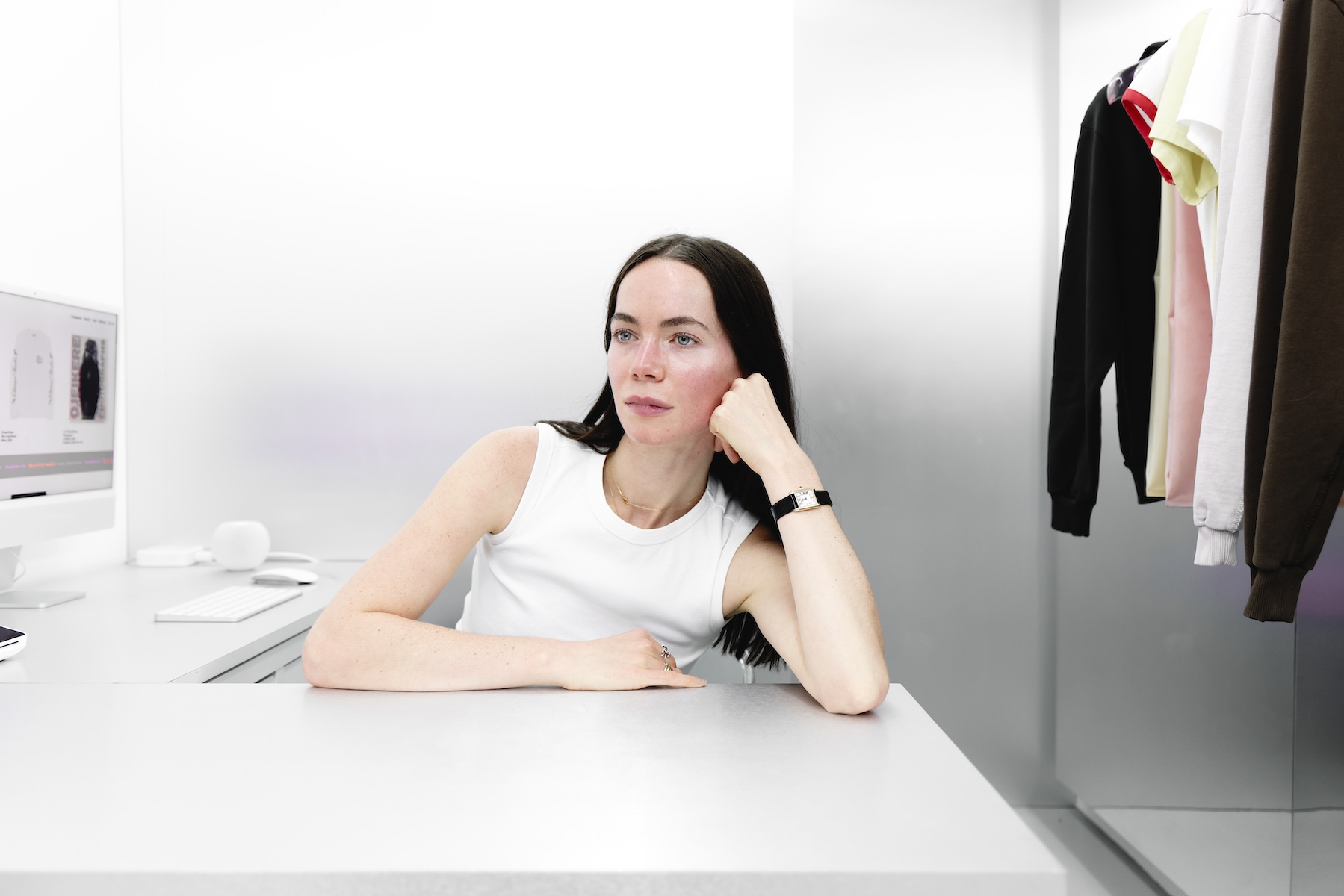 Kat Milne is the designer behind fashion’s most intriguing retail spaces
Kat Milne is the designer behind fashion’s most intriguing retail spacesInfused with elements of the surreal, Kat Milne has designed stores for the likes of Marc Jacobs, Sandy Liang and A24. ‘People are looking for a more tactile experience,’ she tells Wallpaper*
-
 A refreshed 1950s apartment in East London allows for moments of discovery
A refreshed 1950s apartment in East London allows for moments of discoveryWith this 1950s apartment redesign, London-based architects Studio Naama wanted to create a residence which reflects the fun and individual nature of the clients
-
 The Stahl House – an icon of mid-century modernism – is for sale in Los Angeles
The Stahl House – an icon of mid-century modernism – is for sale in Los AngelesAfter 65 years in the hands of the same family, the home, also known as Case Study House #22, has been listed for $25 million
-
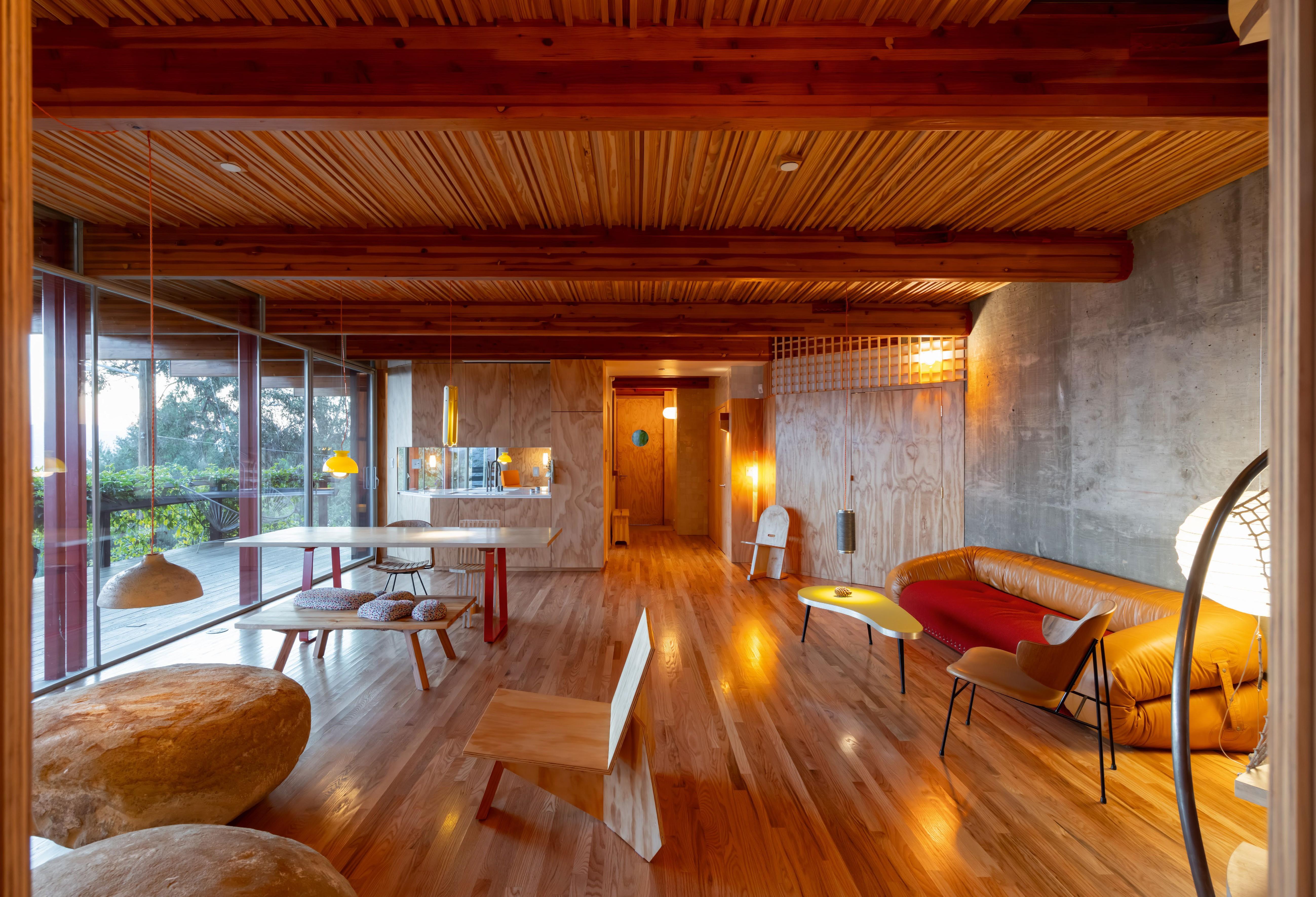 Tour Cano House, a Los Angeles home like no other, full of colour and quirk
Tour Cano House, a Los Angeles home like no other, full of colour and quirkCano House is a case study for tranquil city living, cantilevering cleverly over a steep site in LA’s Mount Washington and fusing California modernism with contemporary flair
-
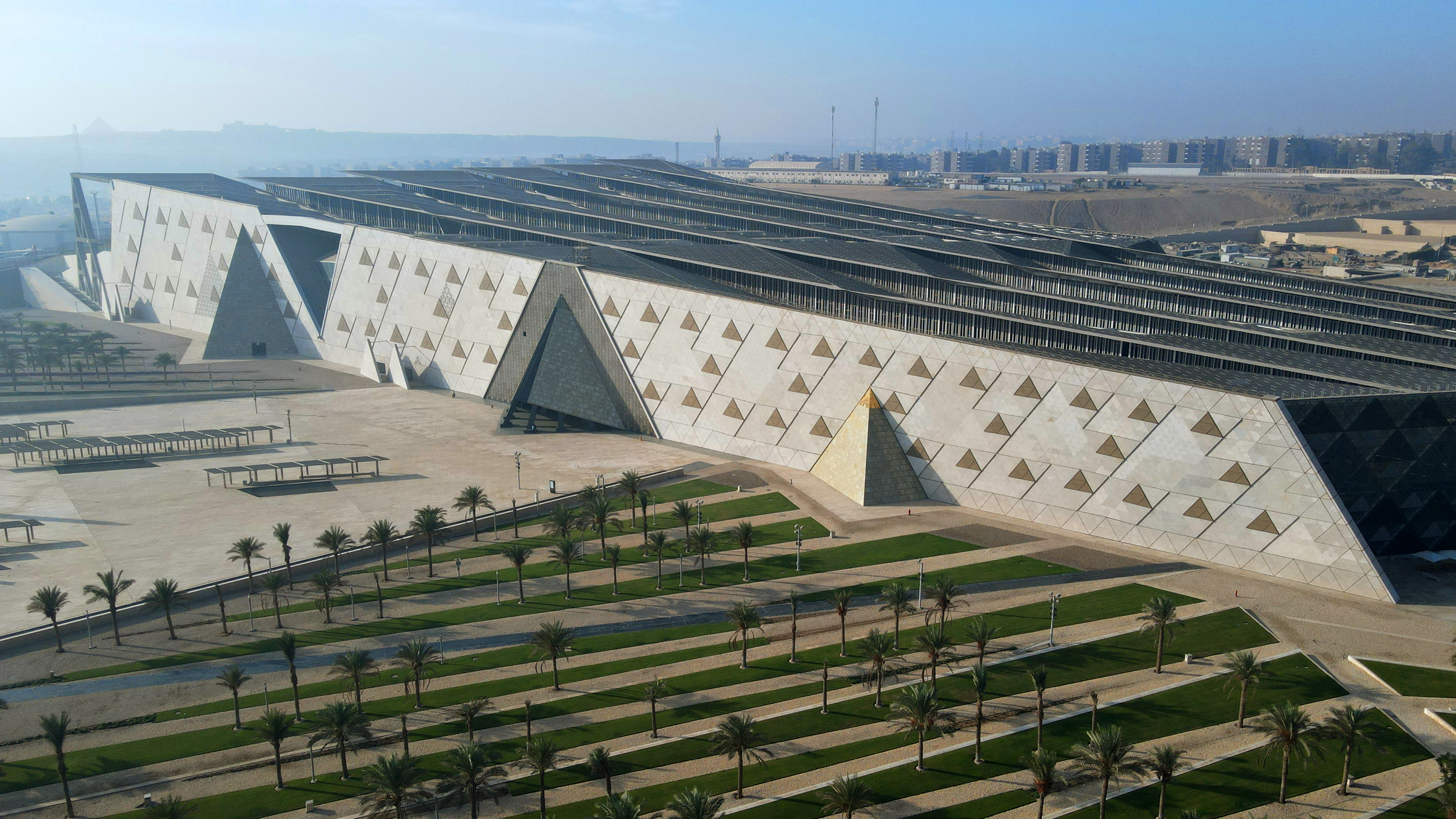 The Grand Egyptian Museum – a monumental tribute to one of humanity’s most captivating civilisations – is now complete
The Grand Egyptian Museum – a monumental tribute to one of humanity’s most captivating civilisations – is now completeDesigned by Heneghan Peng Architects, the museum stands as an architectural link between past and present on the timeless sands of Giza
-
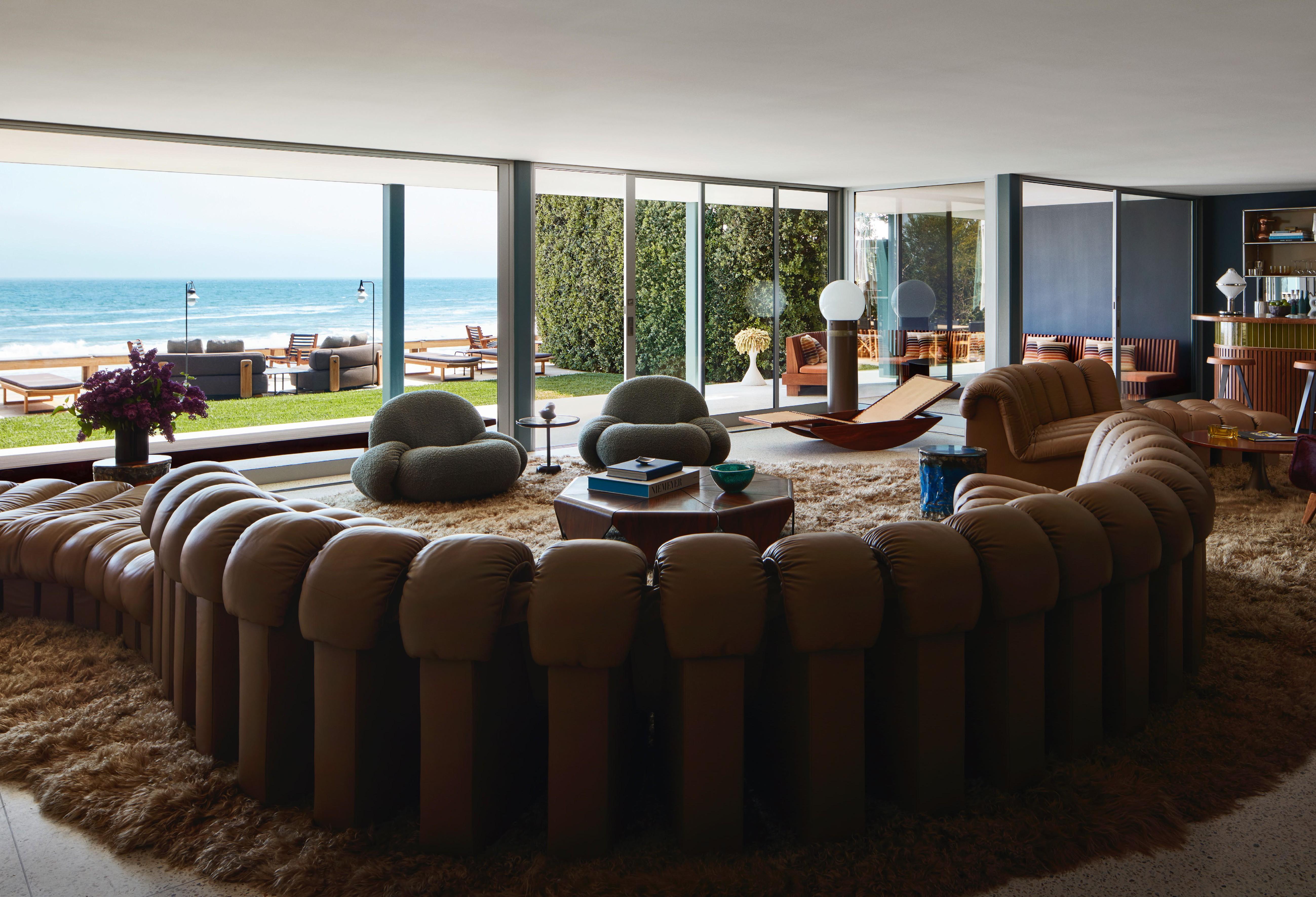 Inside a Malibu beach house with true star quality
Inside a Malibu beach house with true star qualityBond movies and Brazilian modernism are the spur behind this Malibu beach house, infused by Studio Shamshiri with a laid-back glamour
-
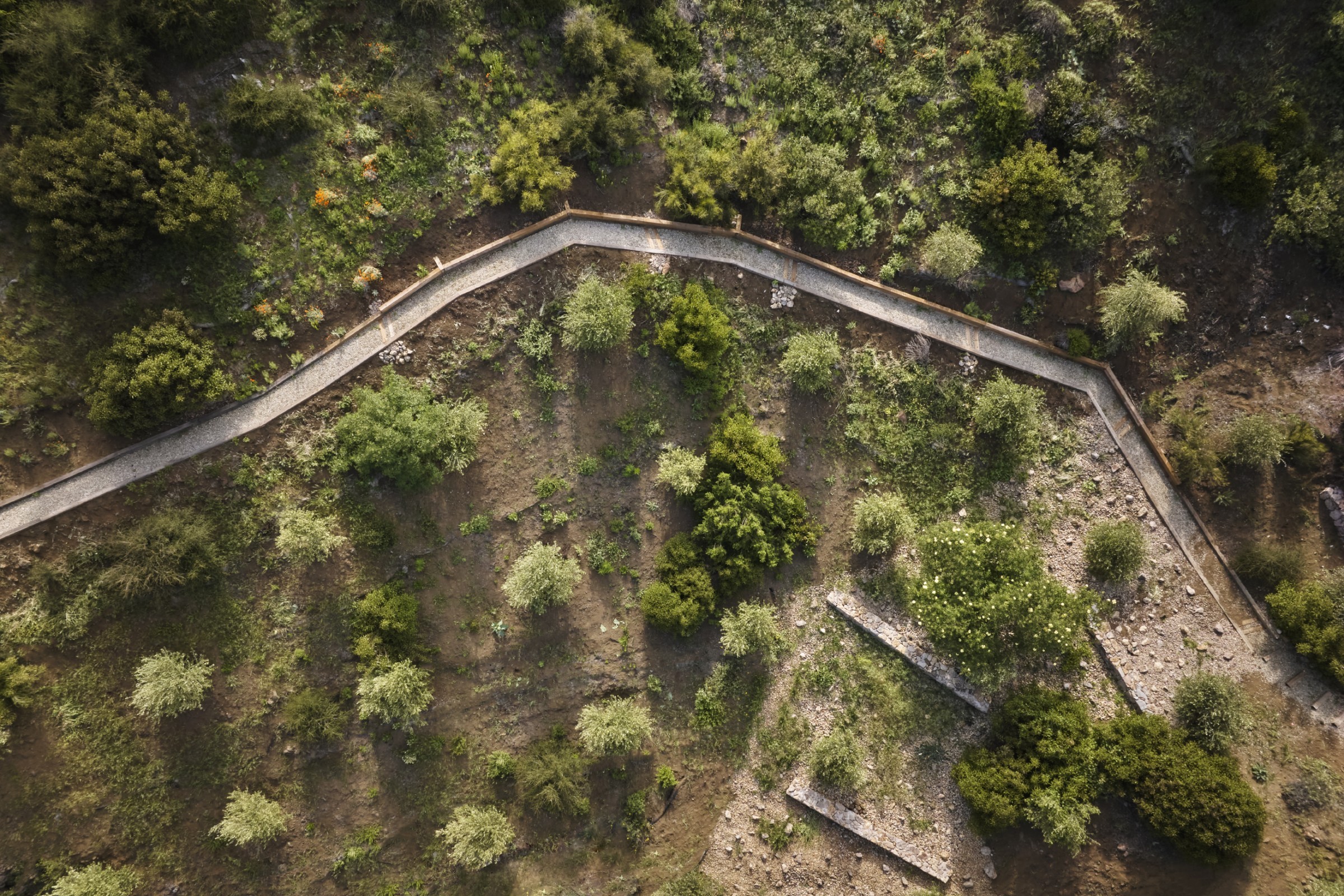 How LA's Terremoto brings 'historic architecture into its next era through revitalising the landscapes around them'
How LA's Terremoto brings 'historic architecture into its next era through revitalising the landscapes around them'Terremoto, the Los Angeles and San Francisco collective landscape architecture studio, shakes up the industry through openness and design passion
-
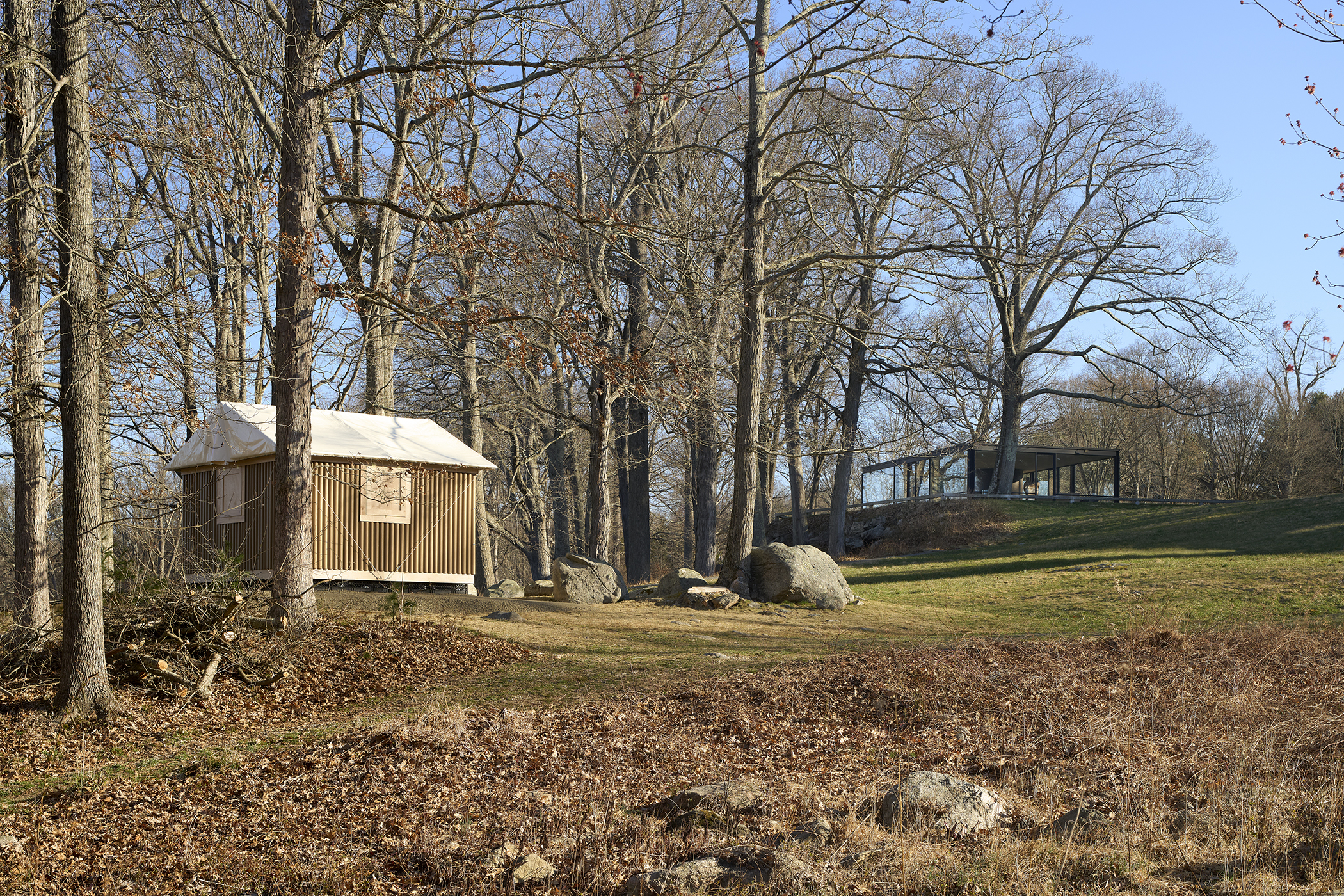 How architects are redefining disaster relief through design
How architects are redefining disaster relief through designDisaster relief architecture is a critical component of humanitarian aid across the globe; read our ultimate guide on how architects can make a difference through design
-
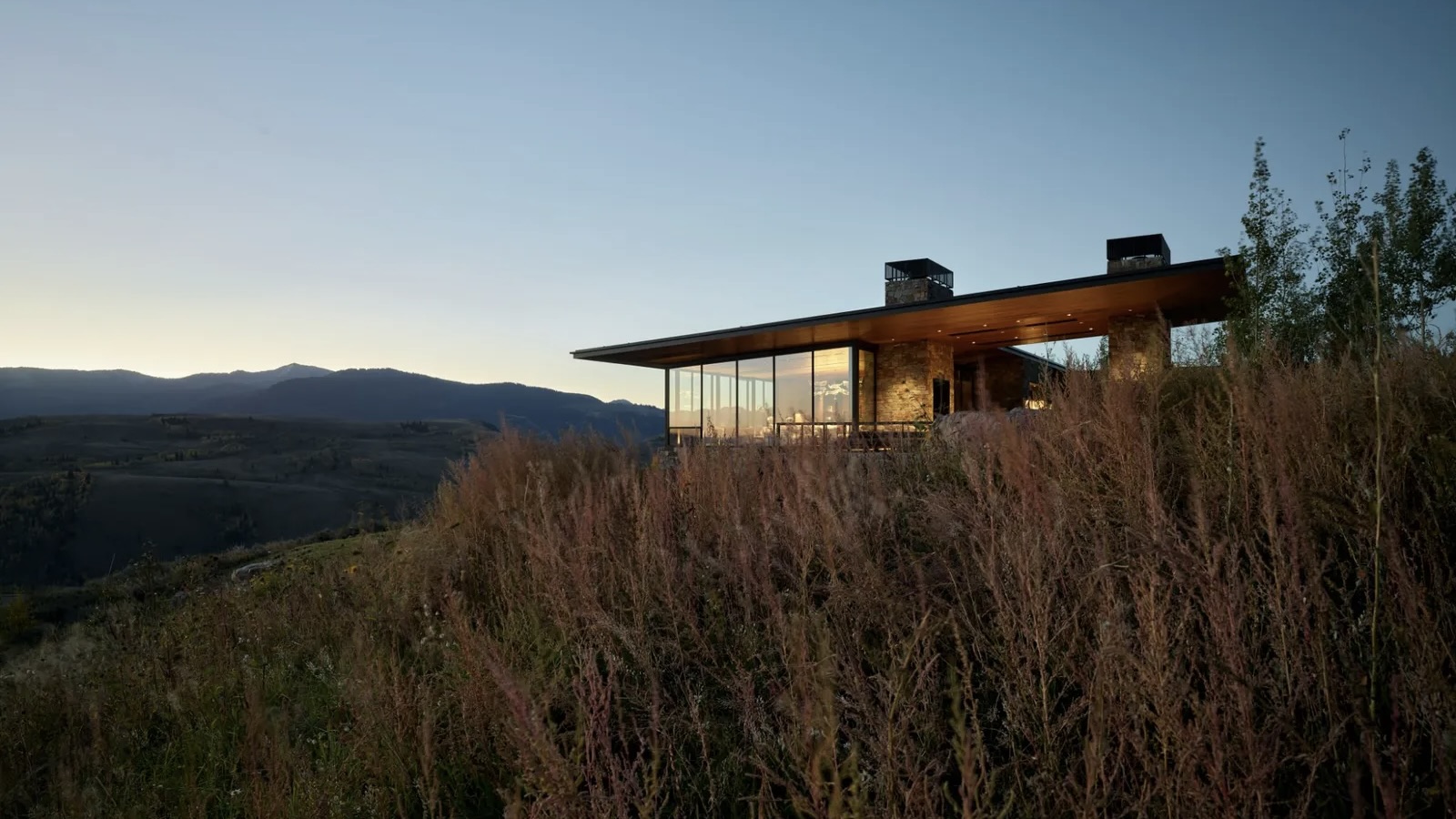 The Architecture Edit: Wallpaper’s favourite July houses
The Architecture Edit: Wallpaper’s favourite July housesFrom geometric Japanese cottages to restored modernist masterpieces, these are the best residential projects to have crossed the architecture desk this month
-
 A dynamic Mar Vista house plays with the rhythm of indoor and outdoor living
A dynamic Mar Vista house plays with the rhythm of indoor and outdoor livingA new Mar Vista house, designed by Mexican architecture studio PPAA, combines a façade with a whisper of brutalism, and a breezy, open interior, seamlessly connected to its Los Angeles setting